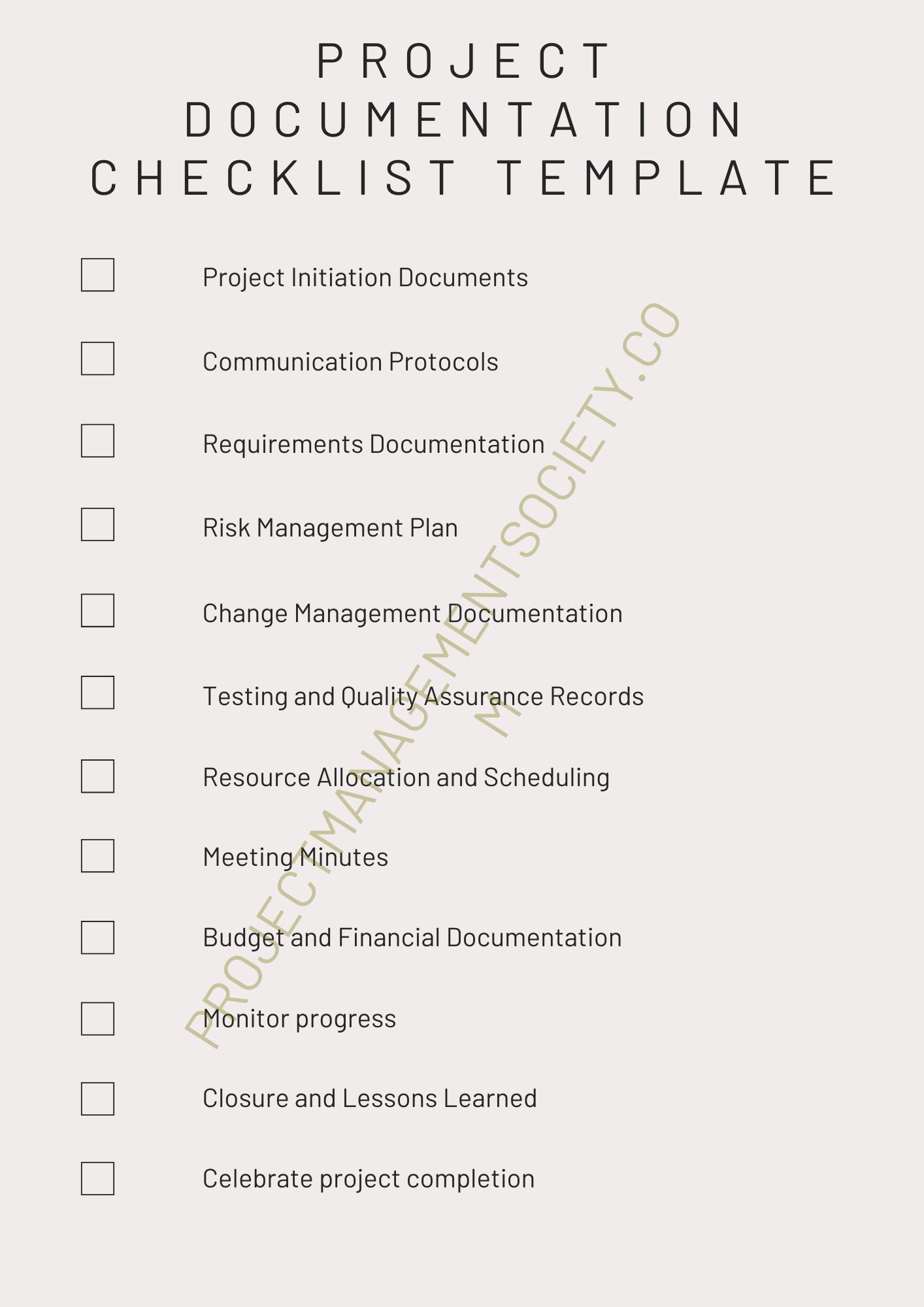 In the realm of project management, meticulous documentation stands as the cornerstone of success. A well-structured and exhaustive project documentation checklist template can prove to be an invaluable asset, guiding teams through the intricate web of tasks, milestones, and communication channels that define a project’s lifecycle. This article delves into the significance of such a template, highlighting its benefits, key components, and how it can empower project managers to streamline processes and ensure accountability.
In the realm of project management, meticulous documentation stands as the cornerstone of success. A well-structured and exhaustive project documentation checklist template can prove to be an invaluable asset, guiding teams through the intricate web of tasks, milestones, and communication channels that define a project’s lifecycle. This article delves into the significance of such a template, highlighting its benefits, key components, and how it can empower project managers to streamline processes and ensure accountability.
The Significance of Documentation
Project documentation serves as the memory bank of a project, capturing critical information and decisions made throughout its duration. It not only aids in maintaining a historical record but also provides a foundation for future planning, analysis, and decision-making. In an era where agility and adaptability are paramount, an organized documentation approach becomes indispensable.
CLICK HERE TO DOWNLOAD 300+ PROJECT MANAGEMENT TEMPLATES & DOCUMENTS IN EXCEL
Understanding the Checklist Template
A project documentation checklist template is a structured framework that outlines the essential documents and records needed to effectively manage a project. This template acts as a roadmap, ensuring that all necessary aspects are addressed and documented, from project initiation to closure. It simplifies the often intricate process of documentation by providing a clear list of items that need attention, thereby reducing the risk of overlooking crucial details.
Key Components of the Template
- Project Initiation Documents: This section covers documents that set the project in motion, such as the project charter, scope statement, and initial project plan. These documents define the project’s purpose, scope, stakeholders, and preliminary timeline.
- Communication Protocols: Effective communication is the lifeblood of any project. The checklist template should include guidelines for regular status updates, meetings, and reporting mechanisms to ensure stakeholders are well-informed.
- Requirements Documentation: This component outlines the project’s functional and non-functional requirements. It should include user stories, use cases, and any other documentation that captures the project’s objectives and desired outcomes.
- Risk Management Plan: A comprehensive project documentation checklist includes a section for risk assessment and mitigation strategies. This ensures that potential roadblocks are identified and addressed proactively.
- Change Management Documentation: As projects evolve, changes are inevitable. This part of the template covers change requests, approvals, and impact assessments, ensuring that modifications are well-documented and communicated.
- Testing and Quality Assurance Records: Documentation related to testing procedures, test cases, and quality assurance measures are vital for ensuring the project’s deliverables meet the required standards.
- Resource Allocation and Scheduling: Keeping track of resource allocation, work assignments, and project schedules is crucial. The template should provide a framework for managing these aspects efficiently.
- Meeting Minutes: A record of project meetings, discussions, and decisions made during these sessions ensures transparency and accountability among team members.
- Budget and Financial Documentation: Financial considerations are integral to project management. The checklist template should encompass budget estimates, expenditure tracking, and financial reports.
- Closure and Lessons Learned: Properly closing a project involves documentation of the project’s outcomes, lessons learned, and recommendations for future endeavors. This step facilitates continuous improvement.

Benefits of Using a Comprehensive Template
- Efficiency: A well-structured checklist template saves time and effort by providing a systematic approach to documentation. Team members can focus on executing tasks rather than figuring out what needs to be documented.
- Consistency: Standardized documentation practices foster consistency across the project. This aids in understanding project progress and updates regardless of who is reviewing the documentation.
- Accountability: With a detailed checklist, responsibilities for documenting various aspects of the project become clear. This enhances accountability among team members and stakeholders.
- Mitigating Risks: Thorough documentation reduces the risk of miscommunication, misunderstandings, and missed deadlines. It acts as a safety net against potential disputes.
- Knowledge Transfer: Well-documented projects are easier to hand over to new team members or stakeholders, as the documentation serves as a comprehensive guide to the project’s history and current status.

Conclusion
In the intricate dance of project management, effective documentation sets the rhythm. A comprehensive project documentation checklist template is the conductor, orchestrating the harmonious flow of information, tasks, and decisions. By embracing such a template, project managers and teams can elevate their efficiency, accountability, and overall project success. In a fast-paced world, where the ability to adapt is key, this template becomes an essential tool in the project management arsenal, empowering teams to navigate complexity with confidence.
CLICK HERE TO DOWNLOAD 300+ PROJECT MANAGEMENT TEMPLATES & DOCUMENTS IN EXCEL
